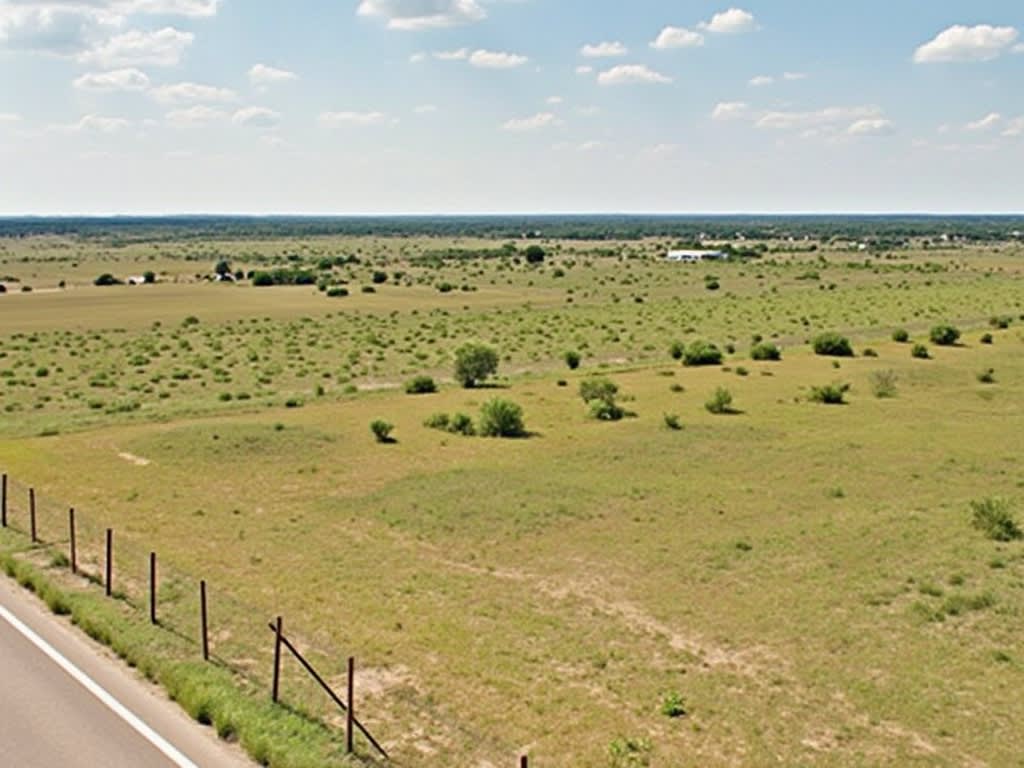In 2023, large corporations continue to pour money into Texas land, with major players like Simon Property Group managing $50 billion in assets while Blackstone Group invests $30 billion in Texas properties. Strong economic indicators fuel this trend, as shown by the state’s impressive 8.2% GDP growth in 2022 and 400,000 new jobs. These numbers make Texas property investments an attractive location for institutional investors looking to expand their real estate portfolios across multiple sectors.
Key Takeaways
- Simon Property Group, Realty Income, and Blackstone Group lead the pack of REITs and private equity firms dominating Texas land deals
- Land values have shot up 25% since 2021, with rural properties now averaging $4,286 per acre
- Dallas-Fort Worth stands out in industrial land purchases, adding 15 million square feet of distribution centers in 2023
- Investment spans multiple property categories including commercial real estate, industrial parks, and energy development sites
- Financing options include traditional bank loans at 4-7% interest rates and private equity funding at 8-12%
Major Players in Texas Land Acquisition
Leading Real Estate Investment Trusts
Three dominant REITs shape Texas land transactions. Simon Property Group manages over $50 billion in assets across the state’s retail sector. Realty Income focuses on commercial properties, with 15% of their portfolio centered in Texas markets. Ventas maintains significant medical facility holdings statewide.
Private Equity and Government Influence
Private equity giants control substantial Texas real estate assets. Blackstone Group leads with $30 billion invested in Texas properties, while KKR and Brookfield Asset Management actively compete for prime locations. The Texas General Land Office (GLO) serves as the state’s primary public land manager, overseeing 13 million acres of state property. Here’s how these organizations typically acquire land:
- Direct purchases from private landowners
- Sale-leaseback arrangements with businesses
- Portfolio acquisitions from other institutions
- Public-private partnership developments
- Strategic land banking for future development

Economic Drivers Attracting Land Buyers
Growth and Resource Advantages
Texas stands as a powerhouse in economic performance, with a GDP growth rate of 8.2% in 2022, making it the fastest-growing large state economy in the U.S. This exceptional growth attracts land buyers looking to capitalize on the state’s business opportunities.
The state’s job market continues to expand rapidly, with over 400,000 new jobs added in 2022. Companies purchasing land in Texas benefit from:
- A tax-friendly business environment with no state income tax
- Leading position in oil and gas production, generating 42.8% of U.S. crude oil
- Strong agricultural sector producing $24.9 billion in annual revenue
- Rich deposits of minerals and natural resources
- Advanced transportation infrastructure including ports, railways, and highways
The state’s natural resources play a significant role in attracting buyers, particularly in energy sectors. Texas produces more than 1,500 million barrels of oil annually, creating substantial opportunities for land investment in mineral rights and energy production.
Agricultural advantages include vast stretches of fertile land suitable for both crops and livestock. This diversity in land use options makes Texas particularly attractive to institutional investors and agricultural companies seeking to expand their operations.
Infrastructure development continues to support this growth, with $85 billion allocated for transportation improvements over the next decade, enhancing land value and accessibility across the state.

Current Market Trends and Notable Transactions
Price Trends and Market Activity
Texas land prices have surged 25% since 2021, with an average cost of $4,286 per acre in rural areas. Industrial buyers like Tesla and Samsung have purchased substantial acreage in Central Texas, driving prices up by 40% in manufacturing corridors.
Regional Demand Patterns
The Dallas-Fort Worth area leads industrial land acquisitions, with distribution centers taking up 15 million square feet in 2023. Here’s how different sectors are shaping land purchases:
- Tech companies favor Austin’s periphery, paying premium rates of $100,000+ per acre
- Energy firms concentrate on West Texas, particularly in the Permian Basin
- Residential developers target Houston’s suburbs, averaging 20-acre parcels
- Agricultural investors focus on the Panhandle, with deals around $2,000 per acre
Local markets have responded with increased property tax valuations, particularly in areas near major corporate developments.
Investment Strategies and Property Types
Diverse Property Portfolios
Texas land investment companies focus on multiple property categories to spread risk and maximize returns. I find commercial real estate particularly attractive in growing metropolitan areas like Dallas-Fort Worth and Austin. These investments include shopping centers, industrial warehouses, and mixed-use developments.
Here are the primary investment targets that drive profits in Texas:
- Residential developments, including master-planned communities and apartment complexes in suburban growth corridors
- Office buildings in business districts, often combined with ground-floor retail spaces
- Industrial parks and logistics centers near major transportation hubs
- Raw land for future infrastructure projects, such as roads and utilities
- Resource-rich properties with potential for mineral, oil, or renewable energy development
Land investment firms capitalize on Texas’s strong population growth by converting agricultural land into residential communities. This strategy has proven especially effective in areas surrounding Houston and San Antonio. Smart investors target properties along planned infrastructure routes, anticipating value increases as development progresses.
The industrial sector remains a key focus, with companies acquiring large parcels near major highways and ports. These locations support distribution centers and manufacturing facilities, meeting the rising demand for e-commerce infrastructure.
Companies also pursue properties with natural resource potential, whether for traditional energy extraction or renewable projects like solar farms and wind turbines. This dual approach helps maintain steady returns while adapting to changing energy markets.

Financial and Legal Considerations
Funding Your Land Purchase
Several financing paths exist for Texas land acquisitions. Traditional bank loans offer structured financing with interest rates typically ranging from 4% to 7%, depending on credit history and property type. Private equity groups serve as alternative funding sources, often providing faster approval processes but with higher interest rates between 8% and 12%.
The state of Texas supports land buyers through targeted incentives. These include property tax exemptions for agricultural use and veterans’ benefits for qualified service members.
I recommend completing these essential due diligence steps before finalizing any land purchase:
- Title search and insurance verification
- Boundary survey confirmation
- Mineral rights investigation
- Water rights documentation
- Zoning and land use restrictions review
- Access easement validation
Environmental assessments form a critical part of the purchase process. A Phase I Environmental Site Assessment examines historical property use and potential contamination risks. This assessment typically costs between $2,000 to $5,000 but proves invaluable in identifying potential issues before purchase.
Should the Phase I assessment reveal concerns, a more comprehensive Phase II assessment might be needed, involving soil and groundwater testing. This detailed evaluation helps protect buyers from future liability and ensures compliance with state environmental regulations.

Regulatory Framework and Compliance
Texas Property Code and Land Use Laws
Land buyers in Texas must follow strict state and federal guidelines. The Texas Property Code sets specific rules for property transactions, including disclosure requirements and contract terms.
Here are the key regulations land buyers need to consider:
- Local zoning ordinances that determine permitted land uses and building restrictions
- State environmental protection laws governing wetlands and endangered species habitats
- Federal regulations on land development, including Clean Water Act compliance
- Property tax assessment rules and exemption qualifications
- Transfer documentation and filing requirements with county offices
- Land use restrictions tied to deed covenants or easements
Non-compliance can result in fines, legal action, or transaction nullification. I recommend working with a qualified real estate attorney to review all regulatory requirements before finalizing any land purchase in Texas.

